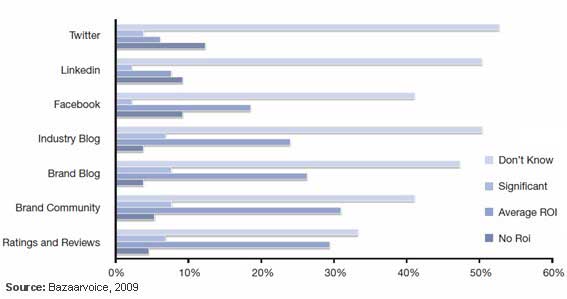Although every young web designer starts their journey from the same place, taking suggestions from the veterans in the industry goes a long way in treading the first few steps. From there, you have to write your own story. There are a lot of new creative minds trying to set their feet in the web design business. However, in a market that is already saturated, it is not easy to leave a solid mark. The right skills, expertise, intelligent decisions, and of course a spark of luck, is really what is required to reach your goal.
What really is a professional website designer?
A professional website designer is a computer professional who produces a website using web programming languages. Their job is to assemble websites, content and graphics creatively using technology, tools and computer software. These websites visually communicate ideas and information to the consumers/clients.
The projects undertaken by website designers usually include developing company websites, managing networks and servers, learning how the ICANN system works and how DNS is used in domains, creating company internal sites, managing social media sites, writing personal and professional blogs, and much more depending on the specific application. They are very engaged in creating content for search engines and social media like Facebook, Google+, Twitter, web pages, and usually have a say in the graphic design portion of the creative.
What makes a successful website designer?
Here are a few tips that will help you in establishing your career as a professional website designer:
Get professionally qualified
Though creativity is a natural flair, technical education is a must in almost any field. There are some steps one should go through before starting as a website designer.
- Get a formal education – Undergo a formal training in the field of graphic design, web design, or visual communication.
- A college degree or an associate degree would be helpful in knowing the fundamentals in this area. Design software like Adobe Photoshop and Dreamweaver are requisites for any website designer to learn and master. Other IDE softwares work. This can be accompanied by new tools and application knowledge as a supplement.
- If a college or a diploma course does not seem feasible due to financial reasons, do your own self-study using textbooks and the vast sea of knowledge on the internet. Some great options for self-learning are Treehouse, Lynda.com, SkillShare, Kelby One, Creative Live, Codecademy, W3Schools and more.
Run your own network
We can’t stress how critical it is that a website designer have their own tools. That means their own network. This network needs to be a dedicated resource from a reliable hosting company like TurkReno Incorporated where there are no clouds and no shared environments. You can’t do this at somewhere like GoDaddy as they don’t sell anything but crap. It is absolutely essential that you begin learning how to harden a website as soon as possible to prevent intrusions and security flaws.
Learn the top web platforms
The more diverse you can get with different web platforms, the more successful you will be. These web platforms include:
- Basic HTML5 – HTML runs the web. You should know this well enough to eventually write it on a blank sheet of paper.
- WordPress – WordPress controls over 50% of the public Internet and is one of the most popular platforms available. There are millions of plugins that result in millions of different types of sites you can make, too.
- Joomla – Joomla is a solid CMS that rivals WordPress. It has similar functionality, but is more focused towards the skills of the developer.
- Drupal – Drupal is the most difficult of the three CMS’s as it relies entirely on your knowledge of programming. This also makes this CMS the most customizable.
- Magento – This is one of the most popular eCommerce CMS platforms and is a good start for those who want a solid eCommerce web design platform.
Specialize in a niche
The arena and scope of website design are vast, and therefore, it is better to specialize into a particular stream. Secondly, with the market being flooded with designers of this niche, specialization could give you the edge in the competition. For example, some young professionals could opt for an addition in multimedia, print, animation, and advertising. Weigh all the pros and cons before taking the plunge into your field of specialization.
Keep reading and learning
Every successful person we know doesn’t stop learning. Even after the completion of any formal training, keep reading about the new design tools and applications that launch. It gives an insight into the industry changes, makes you more confident and gives clients a better impression if you are updated with the latest innovations in the web design field. Keep practicing to improve your expertise.
Stay updated with tools and technology
The recommended tools for application by website designers’ are:
- Adobe creative cloud programs – These include Adobe Photoshop, Illustrator, Muse, and Dreamweaver
- A reliable operating system – Use a good platform where designs can be made, applications can be downloaded and design programs can be run efficiently. We prefer MacOS.
- A notepad and pen – This should be accompanying the web designer everywhere he goes. Rough sketches and points can be noted to use for ideation later.
- Tablet or notebook – Though optional, this device comes handy when on the move or when quick changes have to be made.
Start small
As a newbie, it is best advised to start will lower means, keeping a low profile. One can easily start from home to save costs and look into the various avenues of freelancing sites. Investments should be made step by step once the revenues start flowing. In this process of starting small will help you discover your talent and then you can specialize in working in that stream. Grab any job, however small that comes your way, as it is your next step to the level ahead!
Market yourself well
Make an attractive portfolio of your work, highlighting your strengths and achievements. Since it is the designing world, it should be strong enough to grab attention. Also, try expertise in one field. It could be web development or blogging on technical issues or any other field you enjoy working in. Try and create a niche, so that when a company is looking for someone to design a website, it is only you that come to the mind. So basically: Leave an impact. At this stage, one has to put the best foot forward and try and deliver better than the client’s expectations and much before the deadline. This will leave the customer impressed and happy and would recommend your work to other organizations in future.
Dare to dream
It is not the most qualified that are the most successful in the field. Knowledge is necessary but how to employ it, and how creatively you can design is what makes the best stand out. Do not be afraid to take risks, challenging projects and nail gritting deadlines. Deliver good work and charge for it. Be confident in yourself and let it radiate in your personality and work. Who knows, after a few years, your story might shape the future of other young designers.
Stay updated
This is a highly vital point in this competitive and constantly challenging scenario where technology is being developed and dumped every minute. You have to be aware of the advances and developments in the web design arena. Listen to people, be alert, sign up on the social networks, meet the peers in the industry, read design journals, and make a note of any interesting web design you spot at any public place. You can use this for inspiration later.
In conclusion, the website design market is a hard niche to crack. It requires significant dedication, skill and business/marketing intelligence to make a name for yourself, and build enough credibility to earn a comfortable income. The results are worth it, though, working from home in your pajamas is only part of the dream!









